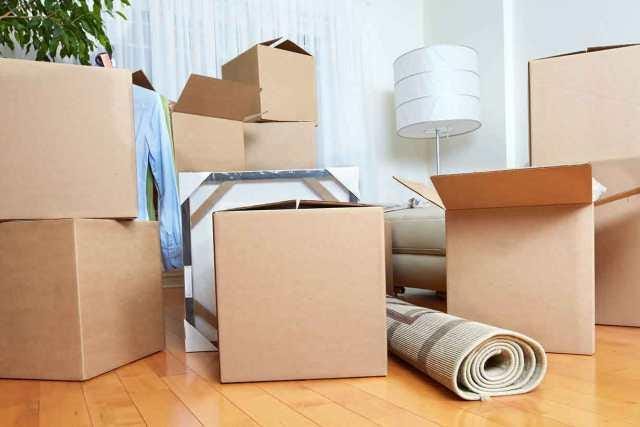Packing electronics might seem tricky, but you can make it easier with some planning. You don’t have to hire professionals to pack your computers, cables, and TV – just follow these steps. They’ll help you keep everything organized, and you’ll be ready to set up your electronics in your new home, no matter which moving company you choose.
Today, you will get to know about the right way of packing electronics and moving them. Stay on this blog, and you will learn about it.
Getting Your Electronic Items Ready To Move
Think ahead before moving your stuff! First, organize everything. Get your user manuals – if you don’t have them, download them from the maker’s website. Protect your electronics: Get insurance for them during the move. Keep track of your gadgets: Use tracking apps or chips like Tile on phones and laptops so you can find them easily if they get lost.
Packing Your Electronics
You can move your electronic stuff safely, even if you’re going far away. Just do some careful packing!
- Take out batteries from devices and remotes to avoid overheating and leaks. Keep all batteries in one place.
- Charge up rechargeable batteries a few days before moving.
- Remove CDs, DVDs, and Blu-rays from devices and tape the drives closed.
- Take out toner cartridges from laser printers and put them in a sealed bag.
- For non-laser printers, take out other cartridges and secure the printhead.
Labeling Your Items And Cables
Make moving easier by labeling everything, especially your electronics. Follow these steps:
1. Get small colored stickers (about eight colors), slightly larger white stickers, and fine-tipped pens.
2. Before unplugging cables (like power, video, and audio), put a colored sticker on each end going into your devices.
3. Stick the same colored sticker next to the cable sockets on each device.
4. Wrap a white sticker around the cable and write what it connects (e.g., Blu-ray player/cable box).
5. For power supplies or cords, write what it powers on a sticker on the supply.
6. Remove the cable, coil it, put an elastic band around it, and place it in a labeled sandwich bag.
7. Group several cables in each bag and attach them to the device they belong to.
8. Consider taking photos of the cables before unplugging them for reference. Take photos throughout the process for easy reconnection later.
Prepare Your Computer For Moving
Get your computer ready for moving without losing important stuff. Here’s how:
Back up your important info:
Before packing, save all your important stuff on an external drive or in the cloud.
Secure your passwords:
Make sure your passwords are tough to guess. Use a password manager like LastPass for random passwords. If your laptop gets stolen, your info stays safe.
Clean the inside of your computer:
If you have a desktop, they get dusty. Before packing, use a vacuum to remove dust. Tighten screws and, if you know how, take out cards from the motherboard.
Pack your computer:
Pack it like your other electronics, but skip packing chips; use paper instead. Chips cause static, which is bad for your computer. Take out dongles, cables, and other stuff before packing.
Packing Tips For Protecting Electronic Devices
Here’s a simple guide for moving your fragile electronics:
- Check the user manual: Read your manual for packing tips from the manufacturer.
- Use original boxes if possible: The best way is in the original boxes. If you don’t have them, ask the manufacturer if they can send you new ones.
- If there are no original boxes, Pack carefully. Cushion the box with towels or bubble wrap. Secure items so they don’t move, and fill gaps with more bubble wrap.
- Wrap large items: Wrap big things in bubble wrap. If there’s a screen, protect it with a towel and extra bubble wrap. Add cardboard around. Cover all with plastic sheeting or wrap.
- Avoid newspapers: Don’t use newspapers for screens. It can scratch and leave marks.
- List the items: Make a list of what’s in each box. Check it against your home inventory to be sure you packed everything.
- Mark as fragile: Label boxes as “fragile” and watch them during the move.
Reinstalling Your Electronics In Your New Home
Here’s a simple guide for setting up your electronics after moving:
Extend and protect:
Buy new extension cords or power strips. Consider surge-protected power strips for computers and sensitive devices to prevent damage from sudden power spikes.
Be careful when unpacking:
Open boxes in the rooms where you’ll use the electronics. Check all packing materials for small items like cables or screws. Don’t throw away any packing until everything works – I’ve accidentally tossed a computer mouse twice!
Take it one step at a time:
Unpack and set up one electronic item at a time, starting with the one with the most cables, like your TV or computer.
Connect cables step by step:
Unpack and connect cables for that device first. Don’t unpack the other wires yet.
Test each item:
Set up the item, plug in the cables, and use colored dots, labels, or photos to guide you. Test to make sure it works.
Repeat for each item:
Move on to the next item, unpack and connect cables, test them, and ensure they work with the previously connected items.
By going step by step, you can test as you go. If there are any issues, you’ll know they’re related to the last item you connected, making troubleshooting easier.
Setting Up Electronic Items
Setting up electronic items is easy! Follow these steps:
Secure Cables: After testing and ensuring everything works, use zip ties to keep your cables organized and prevent a messy look.
Relax and Enjoy: Now, kick back, relax, and binge-watch your favorite shows!
Set Up the Item: Plug in cables using colored dots, labels, or photos as guides.
Test It: Once set up, test to make sure it works.
Unpack and Connect: Move on to the next item. Unpack, connect cables, test them, and check that both items you’ve connected work.
By testing as you go, troubleshooting becomes much easier. Enjoy your newly set up electronics!
Final Thoughts:
Packing electronic items and moving them requires careful steps: insure devices, label and pack, secure data passwords, and clean computers. Special care in packing fragile items, using original boxes if available, and labeling boxes as “fragile” ensures a safer move.
Unpack systematically, test each item, and secure cables with zip ties for an organized setup. Follow these steps to use your favorite electronic items in your new space.







